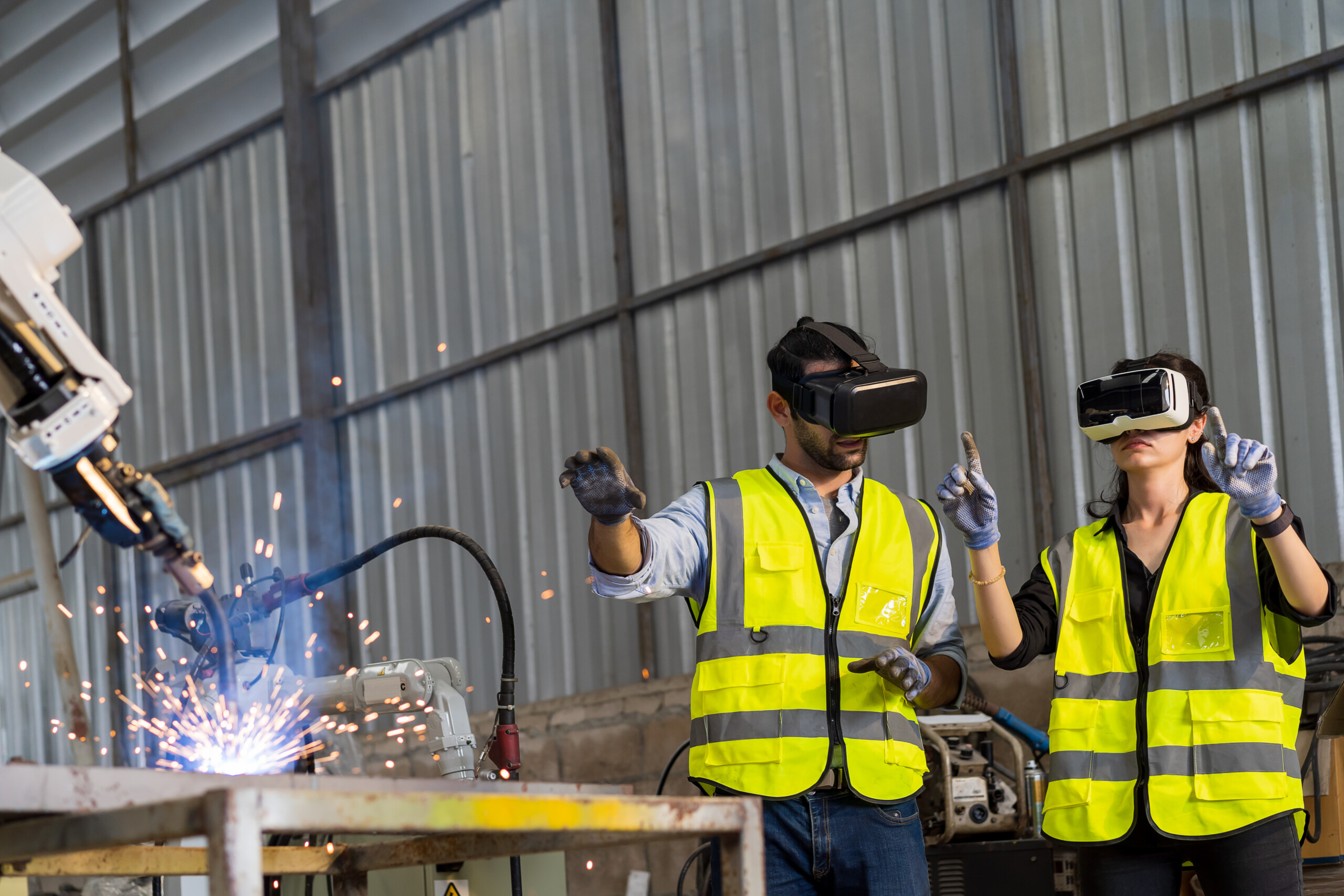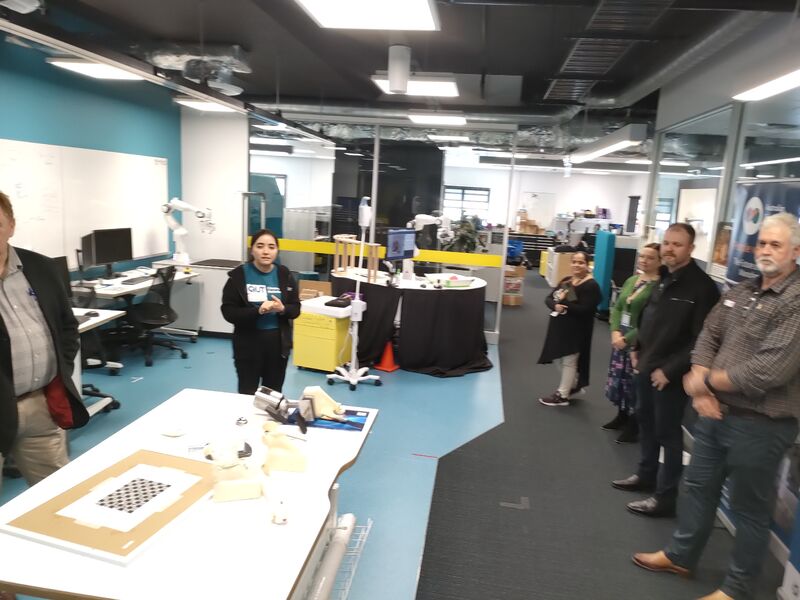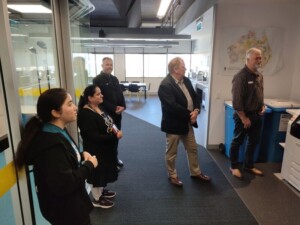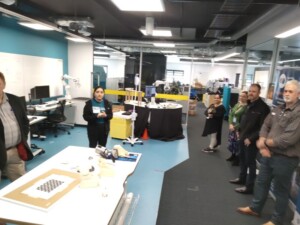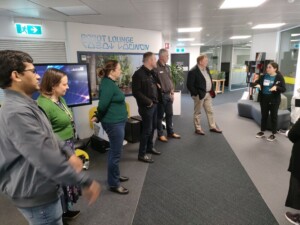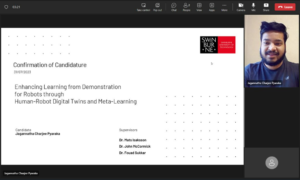Written by Dr Alan Burden, Postdoctoral Research Fellow from the Australian Cobotics Centre.
In previous articles, we delved into socio-technical systems (STS) and highlighted the importance of spatial design in shared human-robot environments. As we continue this exploration, this article will focus on technologies that show immense potential in improving the harmony between humans and cobotic systems. Our spotlight will be on augmented reality (AR), a technology poised to make human-cobot interactions more intuitive, efficient, and enjoyable.
AR is a part of the ‘reality technologies’, often grouped under the umbrella term of extended reality (XR), which also includes virtual reality (VR) and mixed reality (MR). These technologies merge the physical and digital worlds, creating innovative environments where humans and machines interact. AR stands out because it doesn’t replace our reality, as with VR, but instead enhances our existing environment by overlaying digital information.
AR enhances our perception of the physical world by overlaying images, sounds, or other data, onto our physical environment. In cobotics, AR could serve as a communication bridge between humans and robots, facilitating a more intuitive and efficient collaboration. For example, AR can visually guide a human worker in a manufacturing plant, showing them how to operate a machine or assemble a product with the help of a robot. Similarly, AR could provide surgeons with real-time data during a robotic assistant procedure in a healthcare setting. AR offers opportunities to improve the efficiency of the task at hand and enhance the safety and effectiveness of human-robot collaboration.
The potential of AR extends beyond communication. It also plays a crucial role in spatial design for shared human-robot spaces. AR can help visualise the optimal arrangement of a workspace, considering the movement patterns and tasks of both humans and robots, which could lead to safer, more efficient, and intuitive shared spaces. For example, in a warehouse, AR can help design a layout that minimises the risk of accidents between human workers and autonomous robots. By visualising the robots’ paths and highlighting potential danger zones, AR can contribute to a safer and more productive environment.
However, the integration of AR into cobotics is not without challenges. Technical limitations, such as AR devices’ accuracy and reliability, can affect AR applications’ effectiveness. User acceptance is another critical factor. While AR can make human-robot collaboration more intuitive, users must adapt to a new way of working and interacting with technology. Ethical considerations, such as privacy and data security, must also be addressed.
Despite these challenges, AR presents exciting opportunities for the future of cobotics and STS. It can make human-robot collaboration more accessible and user-friendly, opening new possibilities for automation in various industries. Moreover, as AR technology evolves, we can expect even more innovative applications that will further enhance human-robot collaboration.
AR is a powerful tool that can significantly enhance human-robot collaboration in STS. By improving communication and contributing to the design of safer and more efficient shared spaces, AR can help us harness the full potential of cobotics. As we navigate the intersection of humans and technology, embracing tools like AR will be crucial in creating a harmonious and efficient future for human-robot collaboration. The journey towards this future is filled with challenges and exciting opportunities. As we continue to explore and innovate, we can look forward to a world where humans and robots work together seamlessly, each enhancing the capabilities of the other.




 Let’s introduce
Let’s introduce 

